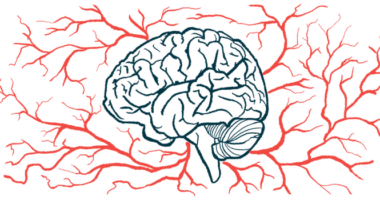Imara Opens Higher Dose Arms in Phase 2b Trials of IMR-687

Imara is opening higher dose arms in two Phase 2b trials assessing the safety and efficacy of IMR-687, its potential therapy for sickle cell disease (SCD) and beta-thalassemia, in patients with these inherited blood disorders, the company announced.
The decision, which applies to the Ardent (NCT04474314) and Forte (NCT04411082) trials, followed a positive review of available safety and tolerability data by the independent data monitoring committees (DMCs) overseeing each of the studies.
“We are pleased that the DMCs’ review of safety data has resulted in opening of the higher dose arms in the Forte Phase 2b clinical trial in patients with beta-thalassemia in January and more recently in the Ardent Phase 2b clinical trial in patients with sickle cell disease in March,” Rahul Ballal, PhD, president and CEO of Imara, said in a press release.
According to the company, both trials were originally designed to allow for the addition of high-dose treatment groups, in which IMR-687 would be given once daily at a dose of 300 or 400 mg, depending on the patient’s body weight. The original dose was 200 mg once daily.
Patient enrollment into both the high and low-dose treatment groups is still underway for both trials. For more information on contacts and locations for the Ardent trial, which has 21 sites across the U.S. and six other countries, go here.
“We designed each of these trials to allow for the additional higher dose arm of IMR-687 and expect to report preliminary data from the higher dose arms as part of our planned data readouts in the second half of 2021,” Ballal said.
A separate safety review committee also recommended increasing the daily doses of IMR-687 — again, from 200 mg to either 300 or 400 mg, depending on each patient’s body weight — in a Phase 2a open-label extension study (NCT04053803). That study is assessing the long-term safety and efficacy of the therapy in adults with SCD. Dose escalation should begin under an amended trial protocol by mid-2021, the company said.
IMR-687 is a selective oral inhibitor of phosphodiesterase 9, known as PDE9 — an enzyme found in red blood cells that normally destroys a signaling molecule called cyclic guanosine monophosphate, or cGMP. The levels of cGMP, also an important signaling molecule, usually are diminished in people with SCD and beta-thalassemia.
By blocking PDE9 and increasing the levels of cGMP, IMR-687 is thought to reactivate the production of fetal hemoglobin — the protein that carries oxygen in newborns and is more effective in doing so than its adult counterpart — in red blood cells. That, in turn, is expected to ultimately ease the symptoms and lessen the complications of SCD and beta-thalassemia.
To date, the therapy has received orphan drug, fast track, and rare pediatric disease designations from the U.S. Food and Drug Administration as a potential SCD treatment, as well as orphan drug status from the European Commission. These designations give drug companies incentives to develop treatments and ease the regulatory process.
Ardent is a Phase 2b trial that is currently assessing the safety and efficacy of IMR-687 in adults, ages 18–65, with SCD. Following enrollment, participants will be randomly assigned to receive either a low or high dose of IMR-687, or a placebo, once per day for one year.
The trial’s main goal is to assess the proportion of patients having an increase of at least 3% in the production of fetal hemoglobin after 24 weeks (about six months).
Secondary objectives include assessing the therapy’s effects on the levels of different biomarkers associated with fetal hemoglobin, the rate of red blood cells’ destruction (hemolysis), the incidence of pain crises, and quality of life.
Like Ardent, Forte is designed to compare the safety and efficacy of two doses of IMR-687 with a placebo in adults with beta-thalassemia over the course of 36 weeks (about nine months). Beta-thalassemia is a blood disorder that reduces the production of hemoglobin, which can lead to a lack of oxygen in many parts of the body.
In addition to these studies, a Phase 2a trial (NCT03401112) has evaluated the safety, tolerability, and clinical efficacy of IMR-687, either alone or in combination with hydroxyurea, an approved treatment to reduce the frequency of pain crises and the need for blood transfusions in SCD patients.
Participants were randomly assigned to receive either IMR-687 at a starting daily dose of 50 or 100 mg, or a placebo, for an initial period of four or 12 weeks (one or three months). Following this initial period, participants receiving IMR-687 had their doses doubled until week 16 or 24.
Initial findings from the group of patients who received IMR-687 alone in the trial showed that treatment was well-tolerated. When given at the highest dose, IMR-687 also lowered the levels of several disease biomarkers and increased the number of red blood cells containing fetal hemoglobin (F-cells).
A second analysis in the same group of patients at the study’s completion showed that, when given at the highest dose, IMR-687 increased the number of F-cells by an average of 155%, and the levels of fetal hemoglobin by 1.7%.
In addition, a safety analysis performed at the time showed IMR-687 continued to be safe and well-tolerated when given alone or in combination with hydroxyurea.
More recently, Imara announced updated six-month data from the study, showing that IMR-687 was able to safely and effectively lower the frequency of pain crises in SCD patients, particularly when given at a higher dose. Importantly, these benefits were seen in both groups of patients, regardless of simultaneous treatment with hydroxyurea.
An open-label extension study enrolling patients who completed this Phase 2a trial also is ongoing — now with an amended dose protocol — to continue assessing the long-term safety and tolerability of IMR-687 in SCD patients.






